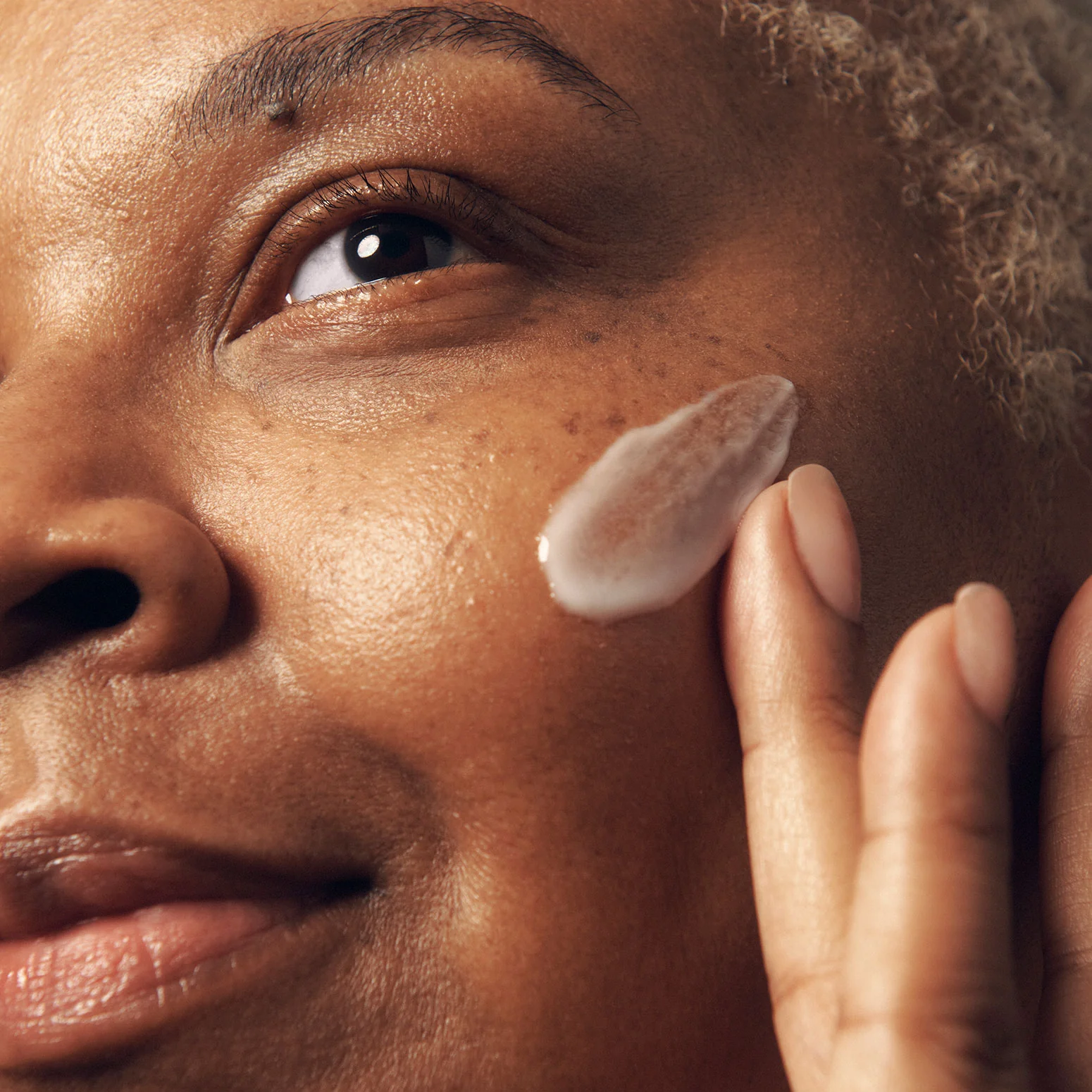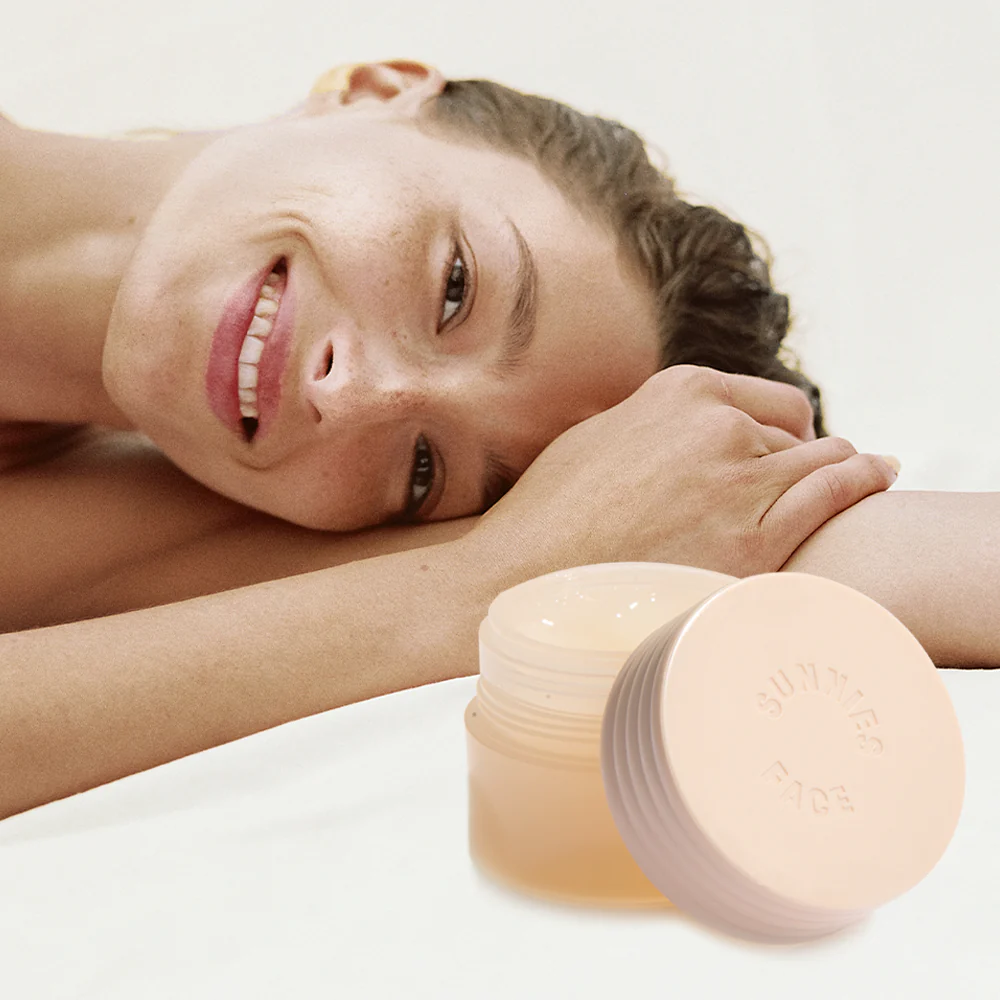
Face Lotion with Hyaluronic Acid: Power of Hydration
The Hydration Hero: Understanding Hyaluronic Acid
Hyaluronic acid has emerged as a superstar ingredient in the skincare world, particularly in face lotions. This naturally occurring substance in the human body acts as a powerful humectant, capable of holding up to 1000 times its weight in water. As a result, hyaluronic acid provides intense hydration to the skin, helping to plump up fine lines and wrinkles. Moreover, it creates a protective barrier on the skin’s surface, locking in moisture and preventing water loss. This remarkable ability makes hyaluronic acid an essential component in many face lotions, especially those targeting dry or aging skin.
Additionally, hyaluronic acid benefits all skin types, including oily and sensitive skin, due to its lightweight and non-irritating nature. The molecule comes in different sizes, with smaller molecules penetrating deeper into the skin and larger ones providing surface hydration. Furthermore, hyaluronic acid supports the skin’s natural healing process and can help soothe inflammation. Its ability to attract and retain moisture not only hydrates the skin but also creates a plumping effect, giving the complexion a more youthful and radiant appearance. As people age, the natural production of hyaluronic acid in the body decreases, making topical application through face lotions an effective way to replenish this vital substance.

Benefits of Face Lotions Containing Hyaluronic Acid
Face lotions infused with hyaluronic acid offer a multitude of benefits for the skin. Firstly, they provide intense hydration without feeling heavy or greasy, making them suitable for all skin types. This deep hydration helps to improve skin elasticity and firmness, reducing the appearance of fine lines and wrinkles. Secondly, hyaluronic acid-containing lotions create a protective barrier on the skin, shielding it from environmental stressors and pollution. This barrier function also helps to lock in other beneficial ingredients from the skincare routine, enhancing their efficacy. Additionally, these lotions can help balance oil production in the skin, making them beneficial even for those with oily or combination skin types.
The hydrating properties of hyaluronic acid also contribute to a smoother skin texture, creating an ideal canvas for makeup application. Moreover, regular use of face lotions with hyaluronic acid can lead to a more radiant and youthful complexion over time. The ingredient’s ability to attract and retain moisture helps to plump up the skin, reducing the appearance of hollows and sagging. Furthermore, hyaluronic acid supports the skin’s natural renewal process, promoting a healthier and more resilient skin barrier. Lastly, these lotions often provide immediate results in terms of hydration and skin plumpness, while also offering long-term benefits with consistent use.
How Hyaluronic Acid Works in Face Lotions
Hyaluronic acid functions as a powerful hydrating agent in face lotions through its unique molecular structure. When applied topically, it forms a thin, invisible layer on the skin’s surface. This layer acts like a sponge, attracting and binding water molecules from the environment and deeper layers of the skin. As a result, it helps to maintain optimal moisture levels in the skin throughout the day. The effectiveness of hyaluronic acid in face lotions also depends on its molecular weight. Lower molecular weight hyaluronic acid can penetrate deeper into the skin, providing hydration to the underlying layers.
On the other hand, higher molecular weight hyaluronic acid remains on the surface, creating an immediate plumping effect and helping to prevent moisture loss. Many advanced formulations combine different molecular weights of hyaluronic acid to provide both immediate and long-lasting hydration benefits. Additionally, hyaluronic acid works synergistically with other ingredients in face lotions. It can enhance the delivery of other active ingredients, helping them to penetrate more effectively into the skin. The hydrating properties of hyaluronic acid also create an optimal environment for skin cell renewal and collagen production. Furthermore, its ability to retain moisture helps to maintain the skin’s pH balance, supporting overall skin health.

Choosing the Right Face Lotion with Hyaluronic Acid
Selecting the appropriate face lotion with hyaluronic acid requires consideration of several factors. Firstly, assess your skin type and specific concerns. For dry or mature skin, look for richer formulations that combine hyaluronic acid with emollients and occlusives. Oily or acne-prone skin types should opt for lightweight, oil-free formulas. Next, consider the concentration of hyaluronic acid in the product. Higher concentrations generally provide more intense hydration, but may not always be necessary for all skin types. Additionally, examine the other ingredients in the formulation.
Look for complementary ingredients like ceramides, which help to strengthen the skin barrier, or antioxidants that provide additional protection against environmental damage. The texture of the lotion also plays a role in its suitability. Gel-creams work well for oily skin, while richer creams suit dry skin better. Furthermore, consider any potential irritants or allergens in the formula, especially if you have sensitive skin. It’s also beneficial to choose products that use different molecular weights of hyaluronic acid for comprehensive hydration. Lastly, consider the packaging of the product. Airless pumps or opaque bottles help preserve the stability of the ingredients. By carefully evaluating these factors, you can select a face lotion with hyaluronic acid that best suits your skin’s needs and preferences.
Incorporating Hyaluronic Acid Face Lotion into Your Skincare Routine
Integrating a face lotion with hyaluronic acid into your skincare regimen enhances overall skin hydration and health. Begin by cleansing your face with a gentle cleanser suitable for your skin type. Follow with a toner if desired, as this can help prepare the skin for better absorption of subsequent products. Next, apply any serums or treatment products you use. Then, while your skin is still slightly damp, apply the hyaluronic acid face lotion. This slight dampness helps the hyaluronic acid attract and lock in more moisture. Gently massage the lotion into your skin using upward, circular motions.
Pay special attention to areas prone to dryness or fine lines. For optimal results, use the lotion twice daily – once in the morning and once at night. In your morning routine, follow the lotion with a broad-spectrum sunscreen to protect your skin from UV damage. At night, you may choose to layer a facial oil over the lotion for extra nourishment, especially if you have dry skin. If you’re using other active ingredients like retinoids or vitamin C, consult with a dermatologist about the best way to incorporate them alongside your hyaluronic acid lotion. Consistency is key when using skincare products, so make the hyaluronic acid face lotion a regular part of your routine for best results.

Combining Hyaluronic Acid with Other Active Ingredients
Face lotions often combine hyaluronic acid with other active ingredients to enhance overall skin benefits. One popular combination is hyaluronic acid with vitamin C. This pairing provides hydration while also brightening the skin and protecting against free radical damage. Another effective duo is hyaluronic acid and niacinamide, which together can improve skin barrier function, reduce inflammation, and regulate oil production. For anti-aging benefits, some lotions combine hyaluronic acid with retinol or peptides. The hydrating properties of hyaluronic acid can help mitigate potential dryness or irritation caused by retinol, while peptides work synergistically to improve skin firmness and elasticity.
Antioxidants like green tea extract or resveratrol are also frequently paired with hyaluronic acid to provide comprehensive protection against environmental stressors. Some formulations include ceramides alongside hyaluronic acid to further support the skin barrier and lock in moisture. For those with acne-prone skin, hyaluronic acid can be combined with salicylic acid or tea tree oil to provide hydration while managing breakouts. It’s important to note that while these combinations can be highly effective, they may not be suitable for all skin types. Always patch test new products and introduce new active ingredients gradually into your skincare routine. Additionally, when using multiple active ingredients, it’s crucial to consider their individual concentrations and potential interactions to ensure optimal efficacy and skin tolerance.
The Science Behind Hyaluronic Acid in Skincare
The effectiveness of hyaluronic acid in face lotions is rooted in its unique molecular structure and properties. Hyaluronic acid is a glycosaminoglycan, a type of sugar molecule that occurs naturally in the body. Its primary function in the skin is to retain water and maintain elasticity. When applied topically, hyaluronic acid forms hydrogen bonds with water molecules, effectively trapping them on the skin’s surface and in its deeper layers. This process, known as hygroscopic activity, is what gives hyaluronic acid its exceptional moisturizing properties. The molecule’s size plays a crucial role in its function.
Larger hyaluronic acid molecules remain on the skin’s surface, providing immediate hydration and a plumping effect. Smaller molecules can penetrate deeper into the skin, offering hydration to the underlying layers and potentially stimulating the skin’s natural hyaluronic acid production. Recent advancements in skincare technology have led to the development of novel forms of hyaluronic acid, such as cross-linked hyaluronic acid, which offers even longer-lasting hydration benefits. Additionally, some formulations use encapsulated hyaluronic acid for targeted delivery to specific skin layers. The science of hyaluronic acid in skincare continues to evolve, with ongoing research exploring its potential in addressing various skin concerns beyond hydration, including wound healing and anti-inflammatory effects.

Debunking Myths About Hyaluronic Acid Face Lotions
Despite its popularity, several myths surround the use of hyaluronic acid in face lotions. One common misconception is that hyaluronic acid draws moisture out of the skin in dry environments. In reality, while hyaluronic acid does attract moisture from its surroundings, a well-formulated lotion will contain other ingredients that prevent moisture loss. Another myth suggests that all hyaluronic acid products are the same. However, the effectiveness of these products can vary greatly depending on the molecular weight of the hyaluronic acid used and the overall formulation.
Some believe that hyaluronic acid is only beneficial for dry or mature skin. In fact, all skin types can benefit from its hydrating properties, including oily and acne-prone skin. There’s also a misconception that higher concentrations of hyaluronic acid are always better. While higher concentrations can provide more intense hydration, they’re not necessary for everyone and can sometimes lead to irritation in sensitive skin types. Another myth is that hyaluronic acid can replace drinking water for skin hydration.
While topical application is beneficial, it doesn’t substitute proper internal hydration. Some people believe hyaluronic acid causes breakouts, but pure hyaluronic acid is non-comedogenic. Any breakouts are likely due to other ingredients in the formulation. Lastly, the idea that synthetic hyaluronic acid is inferior to natural sources is unfounded. Synthetic versions are often more stable and can be produced in various molecular weights for targeted benefits.
Future Trends in Hyaluronic Acid Face Lotions
The future of hyaluronic acid in face lotions looks promising, with ongoing research and technological advancements paving the way for innovative formulations. One emerging trend is the development of multi-weight hyaluronic acid complexes. These formulations combine different molecular weights of hyaluronic acid to provide both immediate surface hydration and deeper, long-lasting moisture. Another exciting development is the creation of time-release hyaluronic acid, which gradually delivers hydration throughout the day for sustained benefits.
Researchers are also exploring ways to enhance the penetration of hyaluronic acid into the skin, potentially through the use of advanced delivery systems like liposomes or nanoparticles. The combination of hyaluronic acid with other cutting-edge ingredients, such as peptides or growth factors, is another area of focus. These pairings aim to provide comprehensive anti-aging benefits alongside intense hydration. Some brands are investigating the potential of fermented hyaluronic acid, which may offer enhanced skin compatibility and efficacy.
Additionally, there’s growing interest in developing hyaluronic acid precursors – ingredients that stimulate the skin’s natural production of hyaluronic acid. Sustainability is also becoming a key consideration, with efforts to produce hyaluronic acid through more environmentally friendly methods. As consumer demand for personalized skincare grows, we may see the emergence of customized hyaluronic acid formulations tailored to individual skin needs. These advancements promise to further enhance the benefits of hyaluronic acid in face lotions, offering even more effective solutions for various skin concerns.

